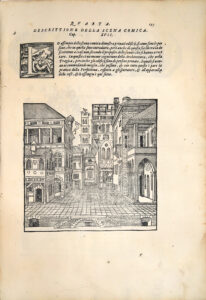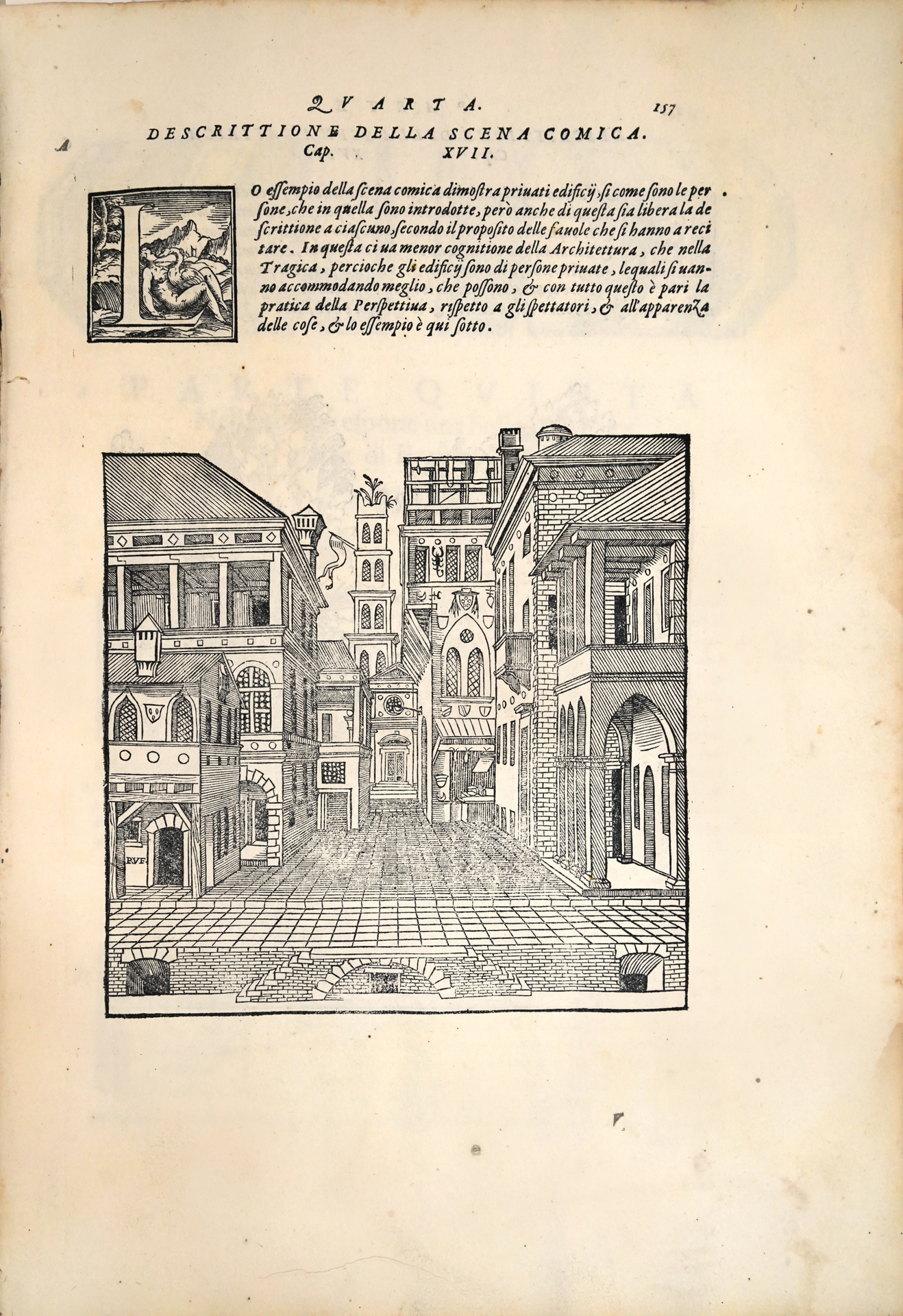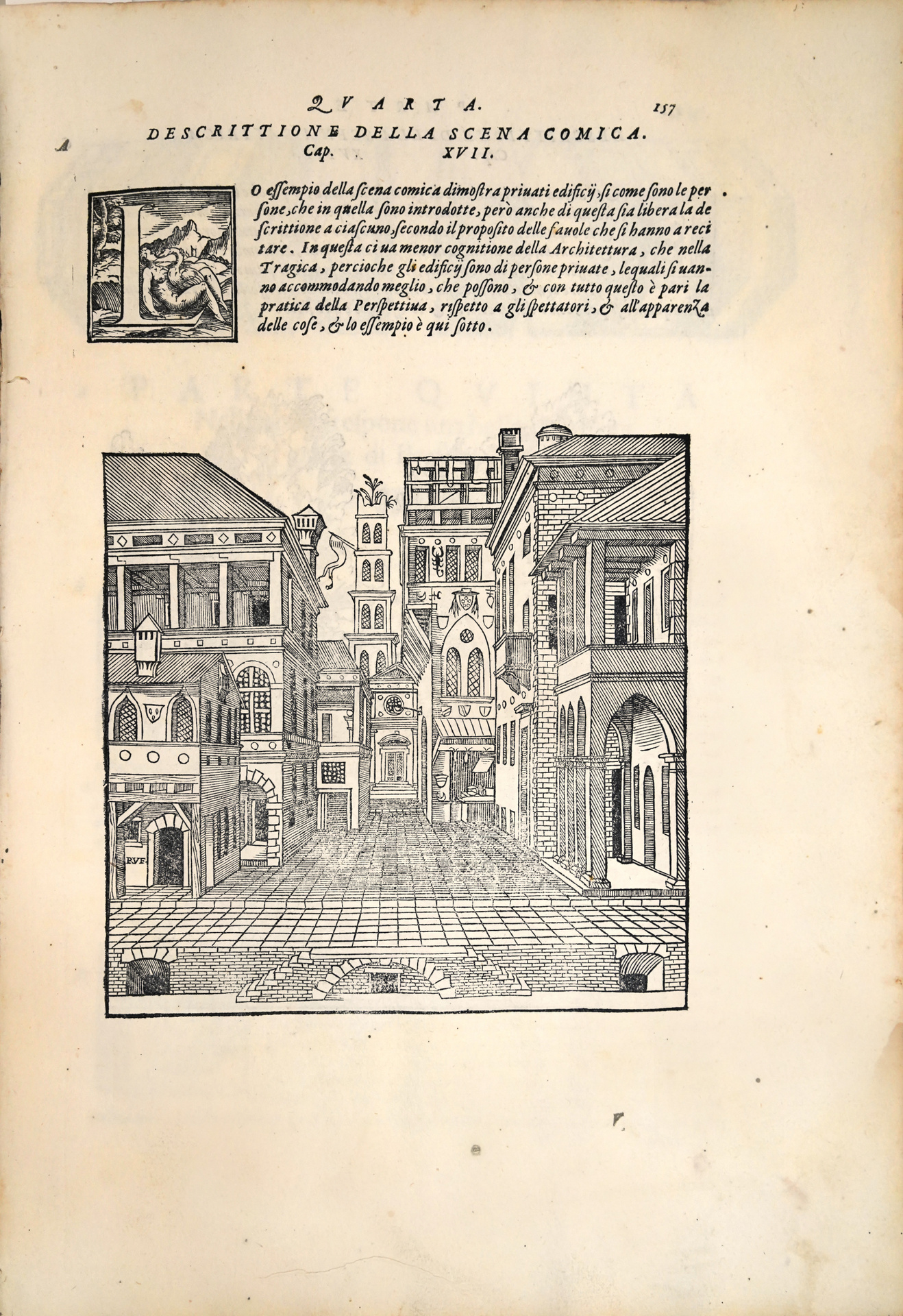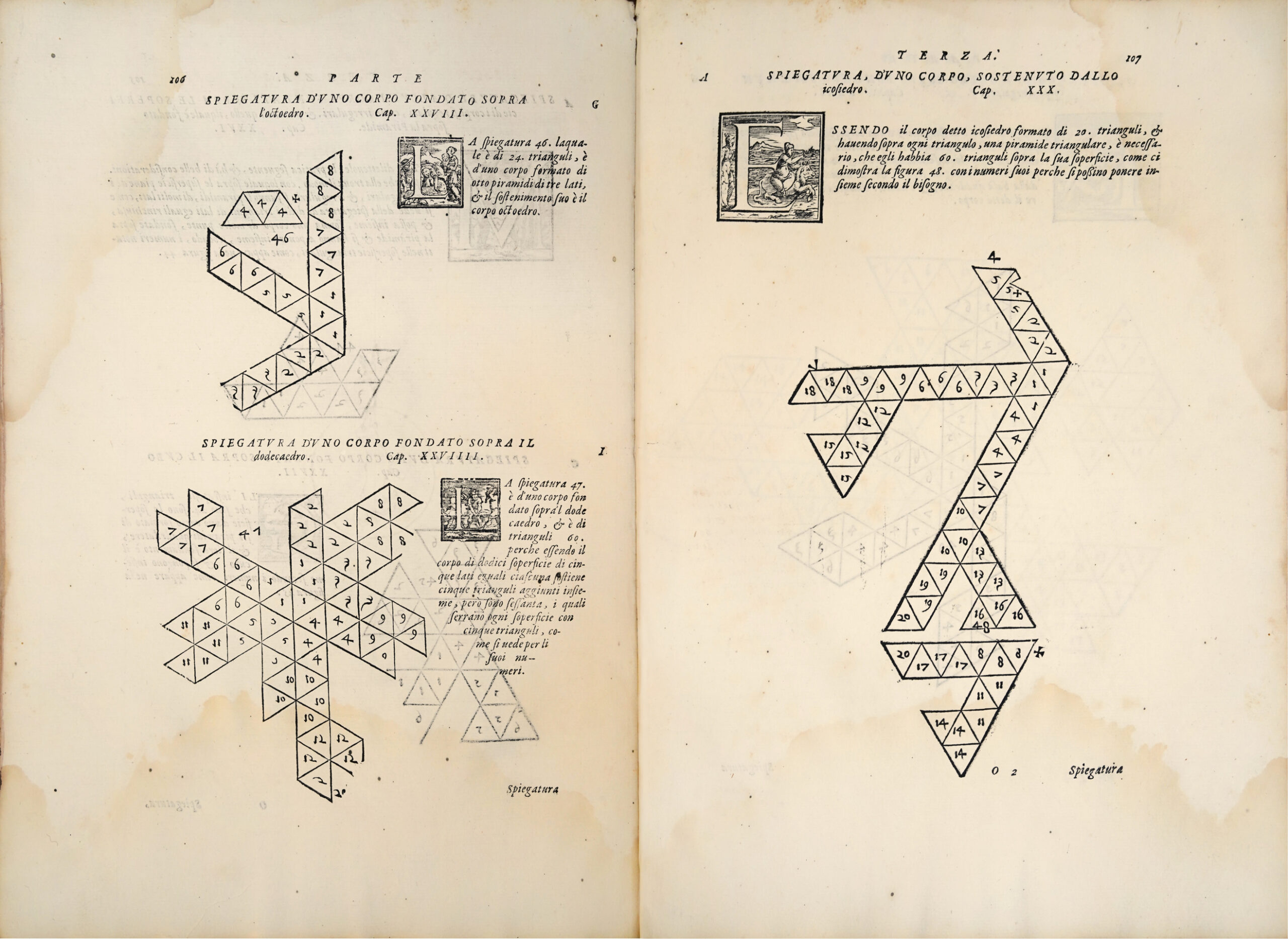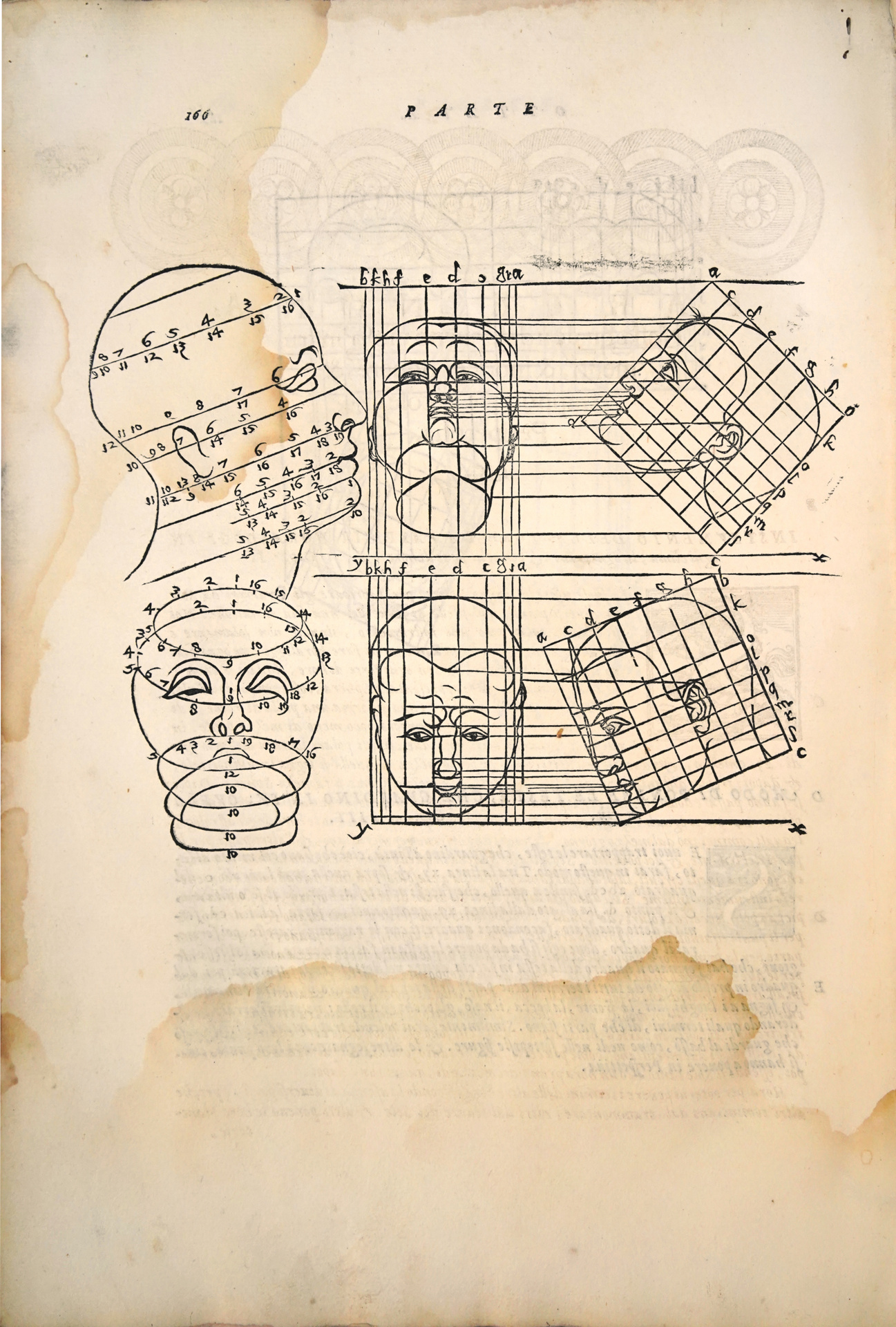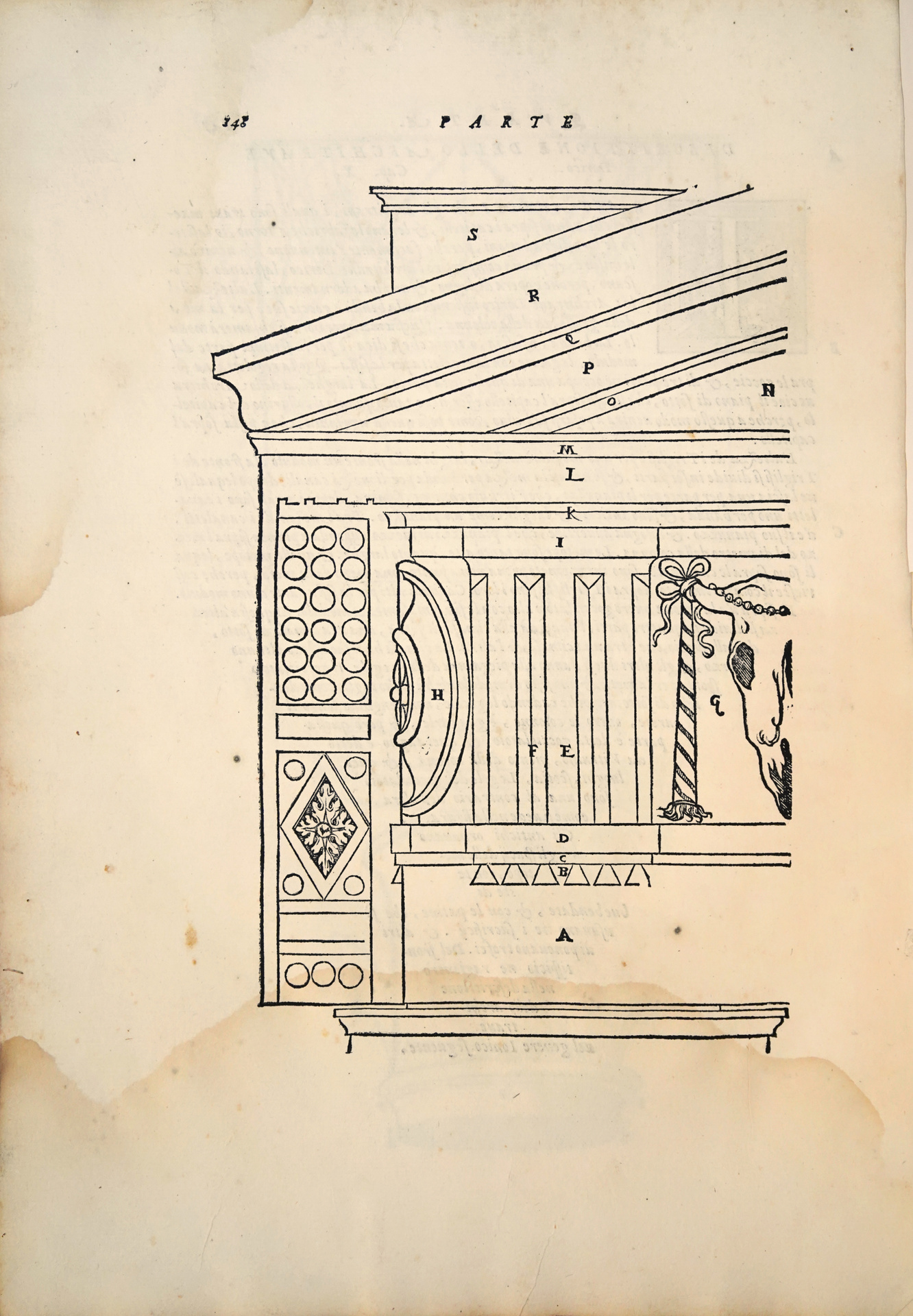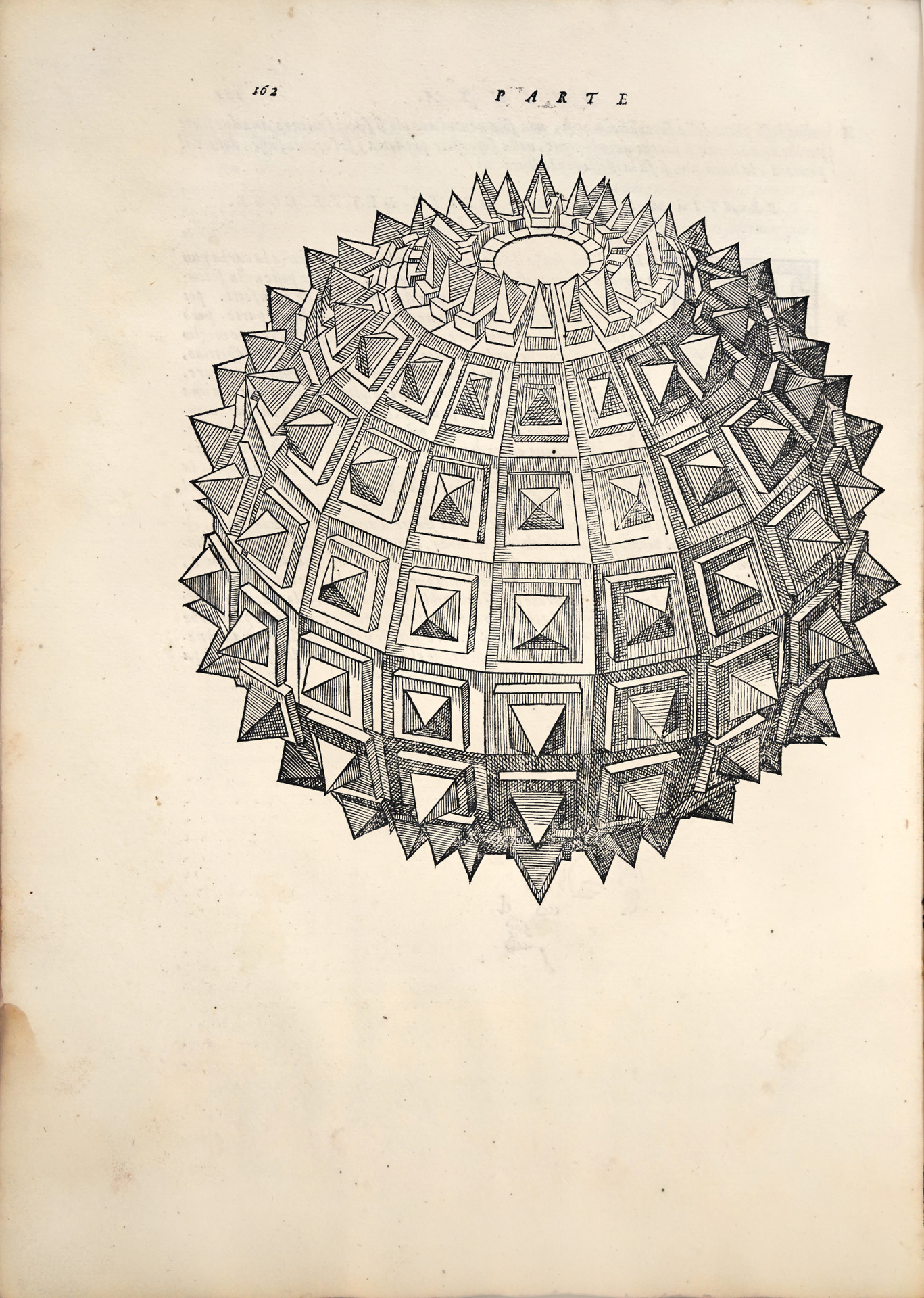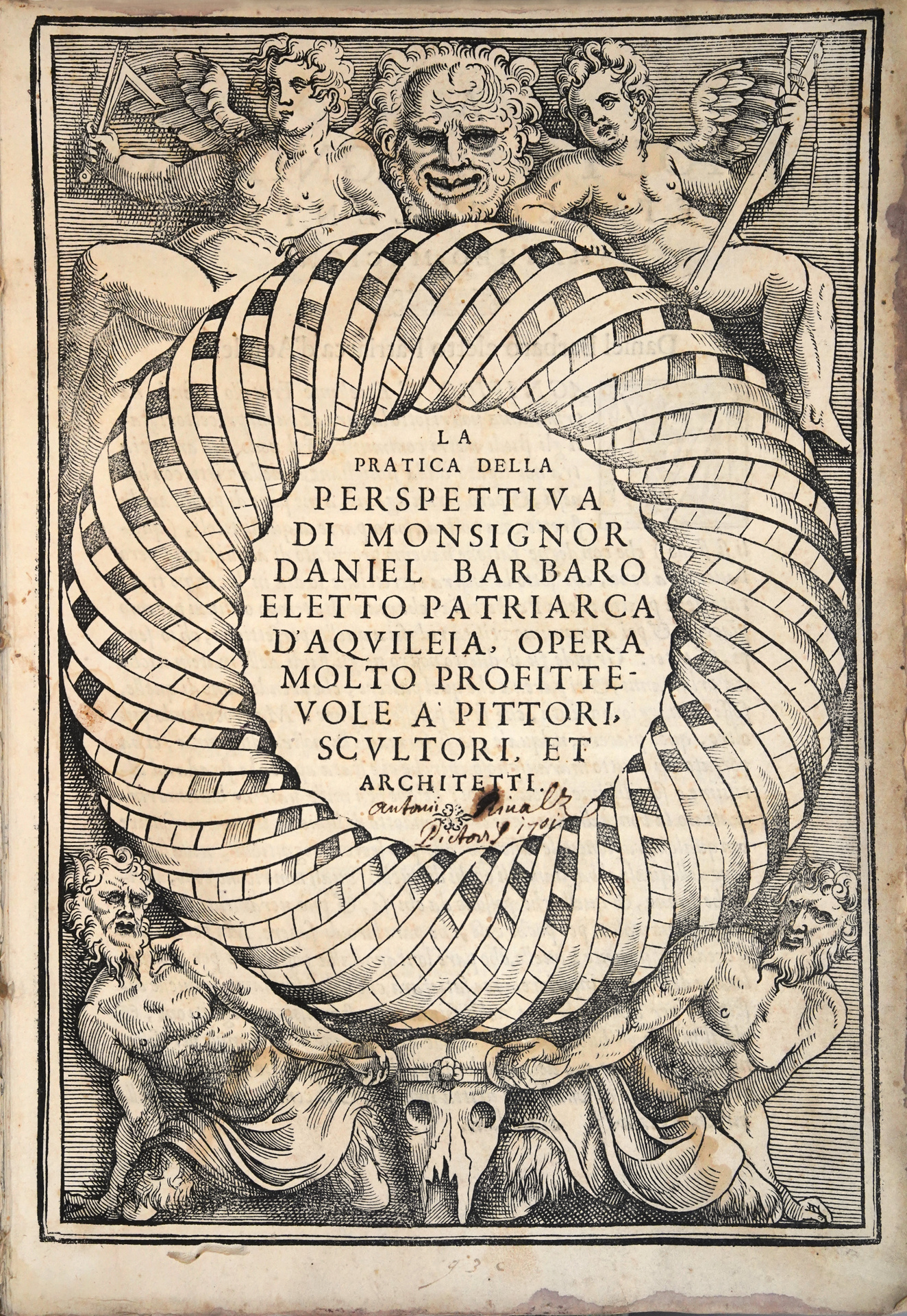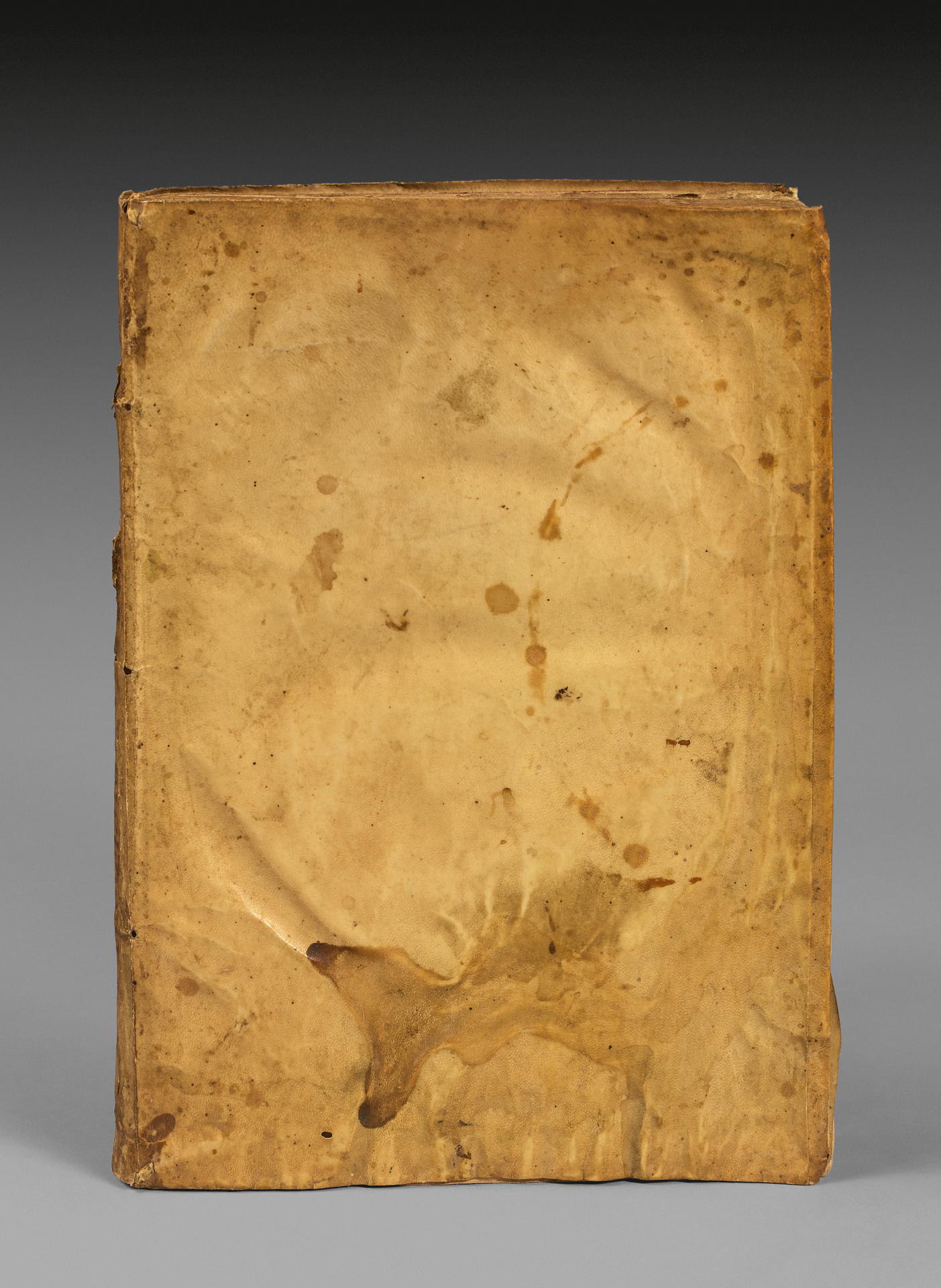Venetia, Camillo e Rutilio Borgominieri, 1569.
Folio [313 x 225 mm] of of (1) bl. l., 195 pp, (6) ll. Soft vellum, calligraphic title on spine, scattered spotting, small marginal wormholes without any damage to the text. Contemporary binding.
Precious 1568 first edition, with relay title, of this rare treatise.
adams, b-171; berlin kat., 4694; brunet, i, 644; cicognara, 809; fowler, 36; gamba, 1233; mortimer italian, 39; censimento, 16 cnce, 4133; riccardi, i, pp. 76-77.
It is illustrated with a very fine engraved title and 200 engraved figures in the text representing optical illusions, geometrical shapes, perspectives, architectural sections, Franceschi’s theatre, initials, measurements of the human body…
Several states of the original edition are described without priority: the first in which the date of the title and colophon is 1568, an intermediate state with the title alone dated 1569, another in which both dates are changed.
This is the first work of practical perspective published in Italy.
« Opera dottissima e diligentissima” (Cicognara).
The three full-page woodcuts of theatre scenes come from the Serlio of 1566; others are copies of Dürer’s Underweysung der messung. The last plate gives a beautiful representation of a newly invented measuring instrument by Giacomo Fusto Castriotto.
“Barbaro mentions a camera obscura equipped with a ci-convex lens. He introduces a novelty: the use of a diaphragm to sharpen the image. This is the first mention of an essential device in photography […]” (Gernsheim, Hist. of Photogr., p. 22)
In his work Barbaro takes up the ideas of Pelerin, Durero, Serlio and Cataneo, simplifying them and making perspective more accessible to artists, architects, painters and sculptors. He gave the first description of the “camera oscura”.
“Daniele Barbaro (1514-1570) took an enthusiastic interest in perspective. This scholar from the Venetian nobility had a brilliant diplomatic career, first in the political administration – he was ambassador to England for part of this period – and then in ecclesiastical circles. Among his many activities, he commented on and supervised the publication of an edition of Vitruvius’ work on architecture. In 1568, Barbaro published “La pratica della pespettiva”. On the title page of the book, he states that it is beneficial reading for painters, sculptors and architects. Barbaro was well versed in the literature of perspective and covered almost every aspect of the discipline known at the time and in a way that makes his book almost encyclopaedic.” (K. Andersen).
Attractive copy preserved in its contemporary soft vellum.
Provenance: manuscript bookplate of the painter Antoine Rivalz dated 1701, corresponding to the year of his return from Rome to Toulouse, after more than ten years in Italy. Rich in the education he had received in Toulouse, Paris and Rome, Antoine Rivalz created an original and varied style, influenced by baroque and classical art, the pictorial traditions of the 17th century and the heritage of the Italian schools.
